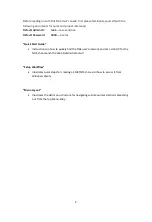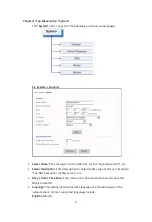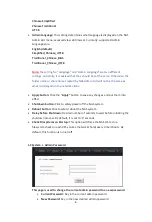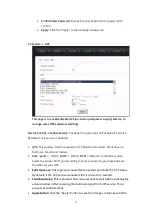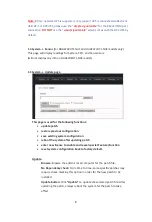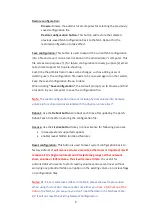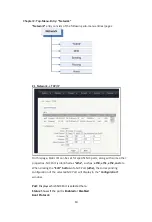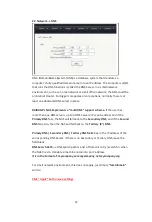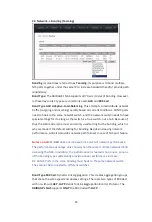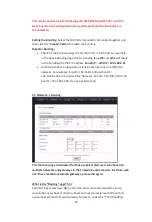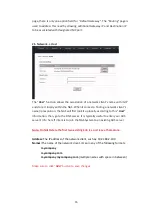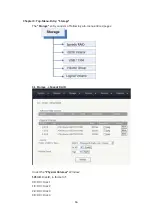
9
Restore configuration:
Browse:
Browse the admin’s local computer for selecting the previously
saved configuration file.
Restore configuration button:
This button will restore the selected
previous-saved NAS configuration back to the NAS. Reboot for the
restored configuration to take effect.
Save configuration:
This button is used to export the current NAS configuration
into a file and save it onto a local location on the administrator’s computer. This
file serves two purposes: (1) for future configuration recovery purpose (2) email
to technical support for trouble-shooting.
Each time the administrator makes some changes, such as adding users or
deleting users, the configuration file needs to be re-saved again. In other words,
keep the saved configuration file up to date.
When clicking
“Save configuration”
, the GUI will prompt you to browse and find
a location in your computer to save the configuration file.
Note:
The saved configuration does not include physical volume info because
volume info is stored and associated with the physical volume itself.
Reboot:
Use the
Reboot button
to reboot each time after updating the patch.
Reboot each time after restoring the configuration file.
License:
Use the
License button
to key in a new license for following purposes:
increase/extend supported capacity
enable/reveal hidden functions/features
Reset configuration:
This button is used to reset system configuration back to
factory default.
It will remove all user accounts, either local or imported; it will
remove all LVs (logical volumes) and VGs (volume groups), either network
share volume or iSCSI volume, thus it will erase all data.
It is useful for
administrator who wants to start creating volumes and users all over without
worrying any potential hidden corruption on the existing volume or unclear-flags
on configuration files.
Notes:
#1: Since it will erase all data in the NAS, please take extra precaution
when using this function. Please make sure either you
have a full backup of the
data
in the NAS, or you are sure you don’t need the data in the NAS any more.
#2: It will not reset the existing Network Configuration.




